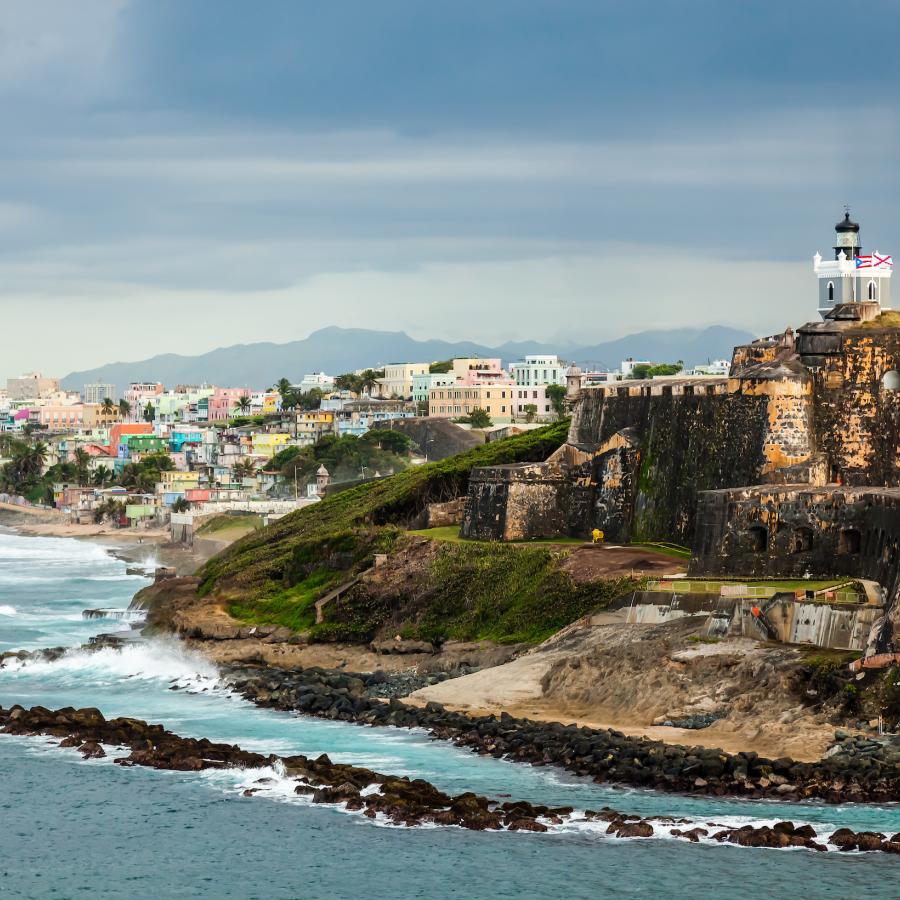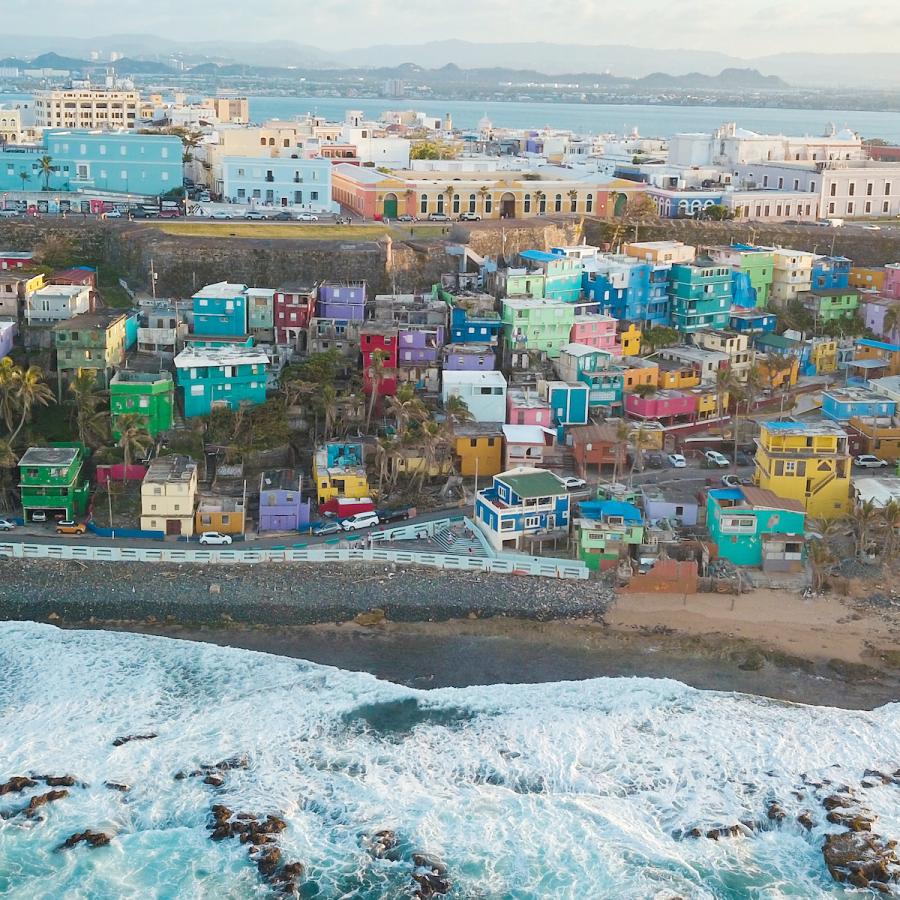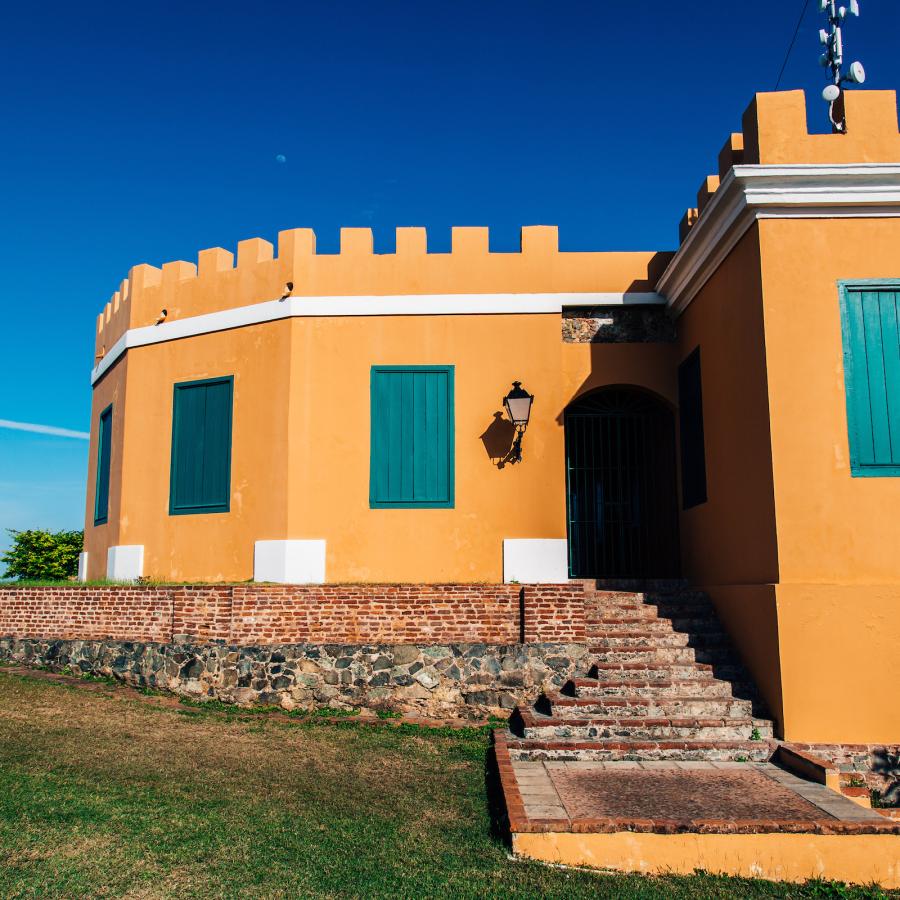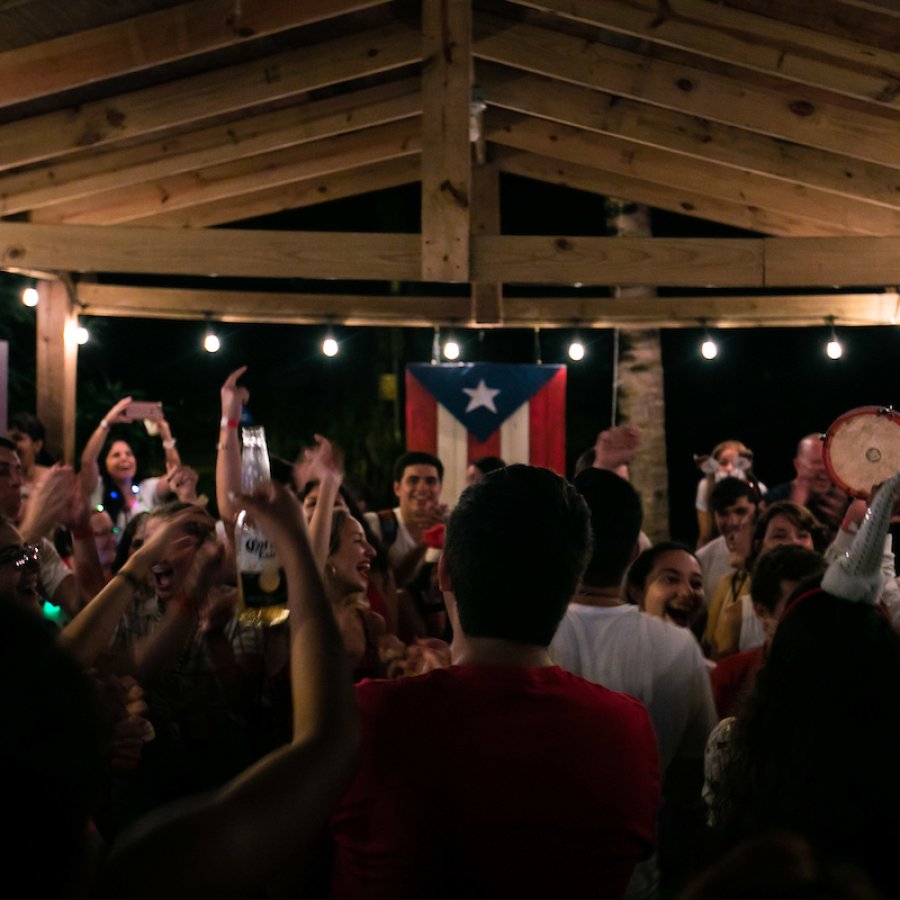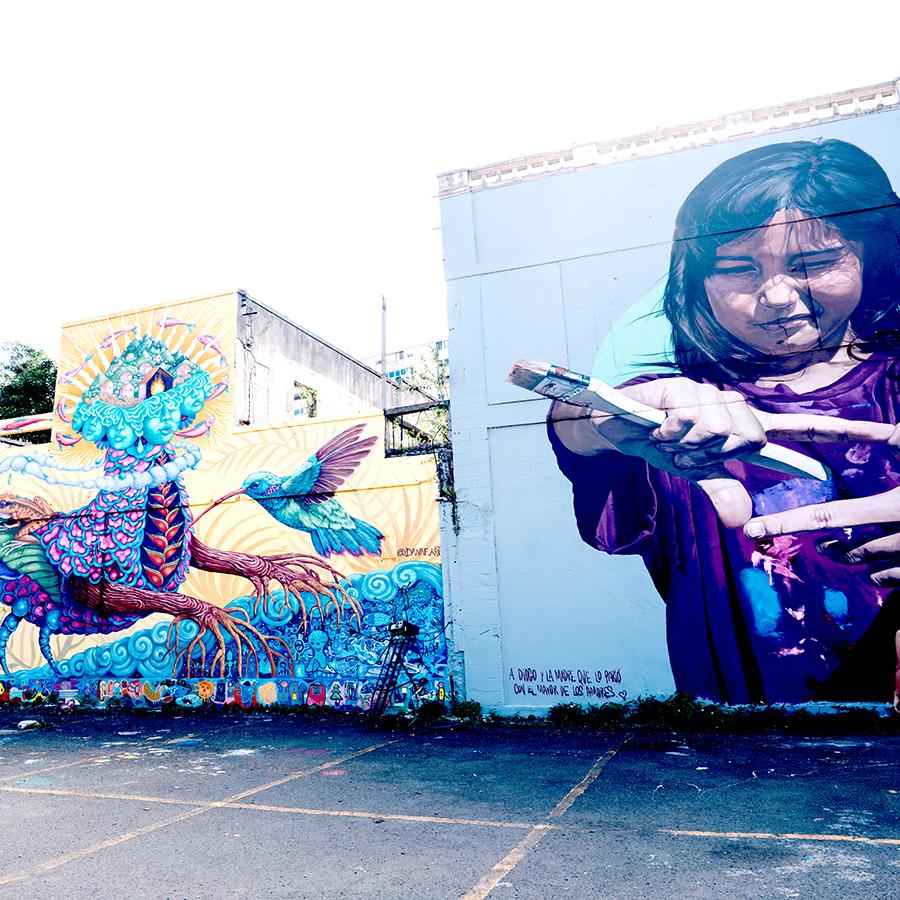Discover the San Juan neighborhood that has emerged as the capital of art in the Caribbean.
Colorful, vibrant, and artsy, that is Santurce! Reminiscent of Miami's Wynwood Arts District or Chicago's West Loop, this San Juan district's fizzy personality is the result of a community of artists coming together year after year to "fix-up" a forgotten neighborhood. The community of artists grew into a movement motivated by the idea that art can change and heal buildings as well as people.
Santurce sits just 10 minutes outside Old San Juan and is one of the island's most free-spirited neighborhoods and every corner is splashed with creativity. Santurce is where many artists claim that the street art movement started developing in Puerto Rico, and a tour around its streets can show you why. Over the years, it has become one of the largest art districts in the Caribbean, establishing world-renowned festivals such as Los Muros Hablan and Santurce es Ley. The neighborhood is home to impressive art galleries and museums, but all you need is step outside and look around to enjoy the ever-changing canvas.
Puerto Rico’s 500+ years of cultural heritage makes it pulse with artistic expression and inspiration. Puerto Rico’s museums are world-renowned, and so is its street art– from murals and sculptures to traditional crafts. Join Lin-Manuel as he shows you that Puerto Rico itself is a huge museum, indoors and outdoors, and the arts take center stage as the island’s biggest export.
Along the way, keep an eye out for works from influential local artists like Alexis Bousquet, Bob Snow, Celso, Vero Rivera, La Pandilla, Defy, Rey X, Javier Cintrón, Rimix, Bik Ismo, Pun18, and many more, who each have their uniquely identifiable style. And don’t forget your camera!
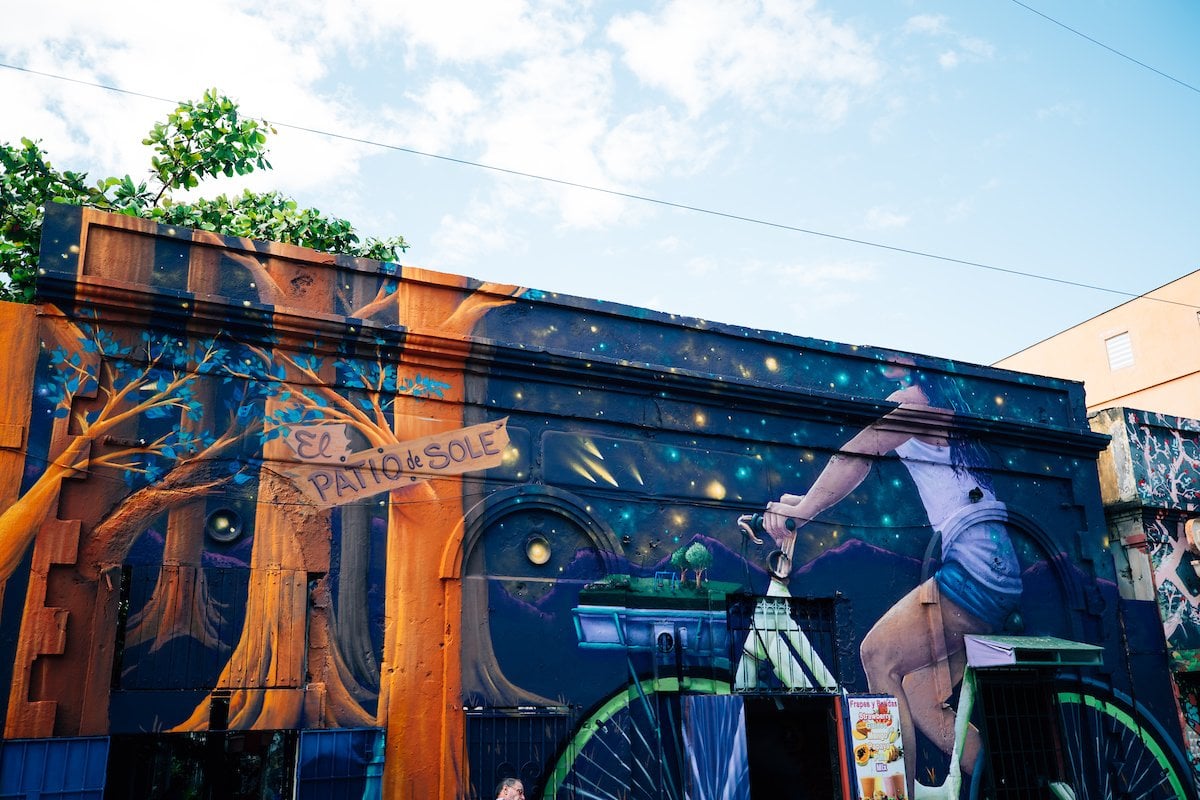
At the Beginning: Calle Cerra
Crossing over the Fernández Juncos Avenue is Calle Cerra, known for having the greatest concentration of graffiti art and murals in the area. Calle Cerra was the birthplace of the annual street art festival Santurce es Ley nearly ten years ago, and every year the concepts on the walls get bigger, bolder, and more breathtaking. You can start there and loop your way around the adjacent streets for surprising findings. Because of the festivals' rules, which states that artists can only paint during the official events (generally held in December), you may encounter unfinished pieces in a few spots. Despite the rough appearance of some places, if you look beyond the façade, you'll find an array of restaurants and cafés that support the artsy vibes of the neighborhood.
At El Patio de Solé, the restaurant is built in the owner's family home and serves traditional dishes like abuelita used to make. Other restaurants like Musa, La Penúltima, El Axolote, and Grazziani offer experiences where you can relish great food and art.
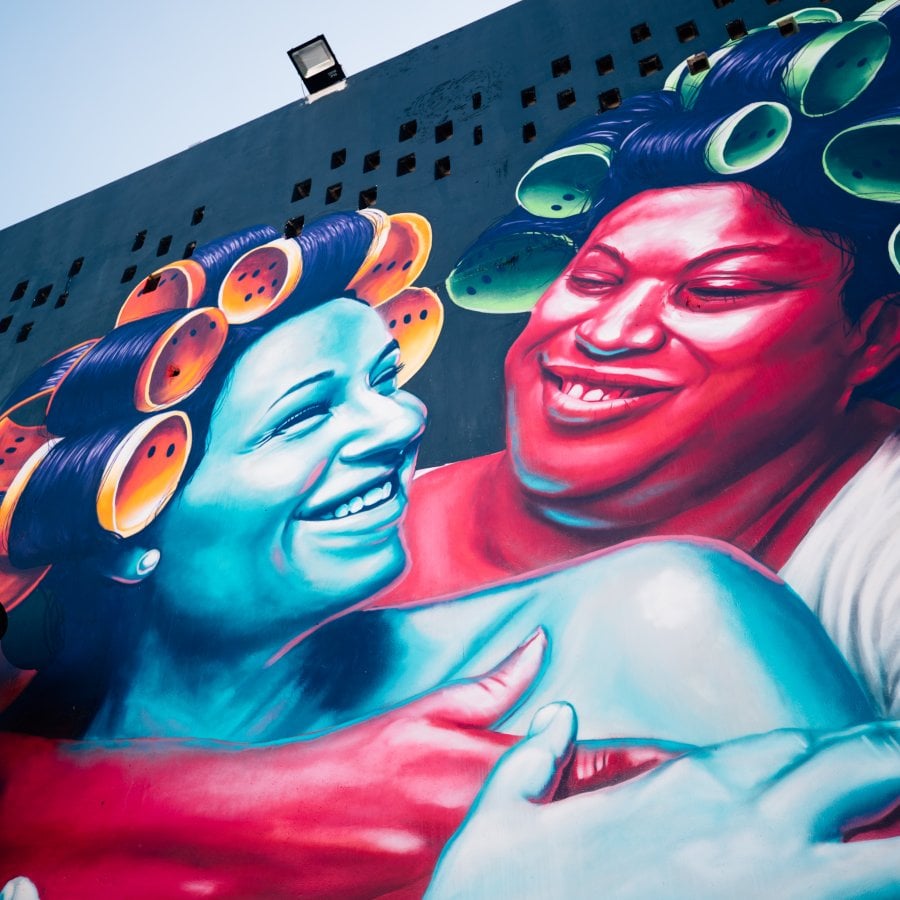
Just like Miami hosts the world-famous Art Basil Festival, the neighborhood has developed its own creative festivals.
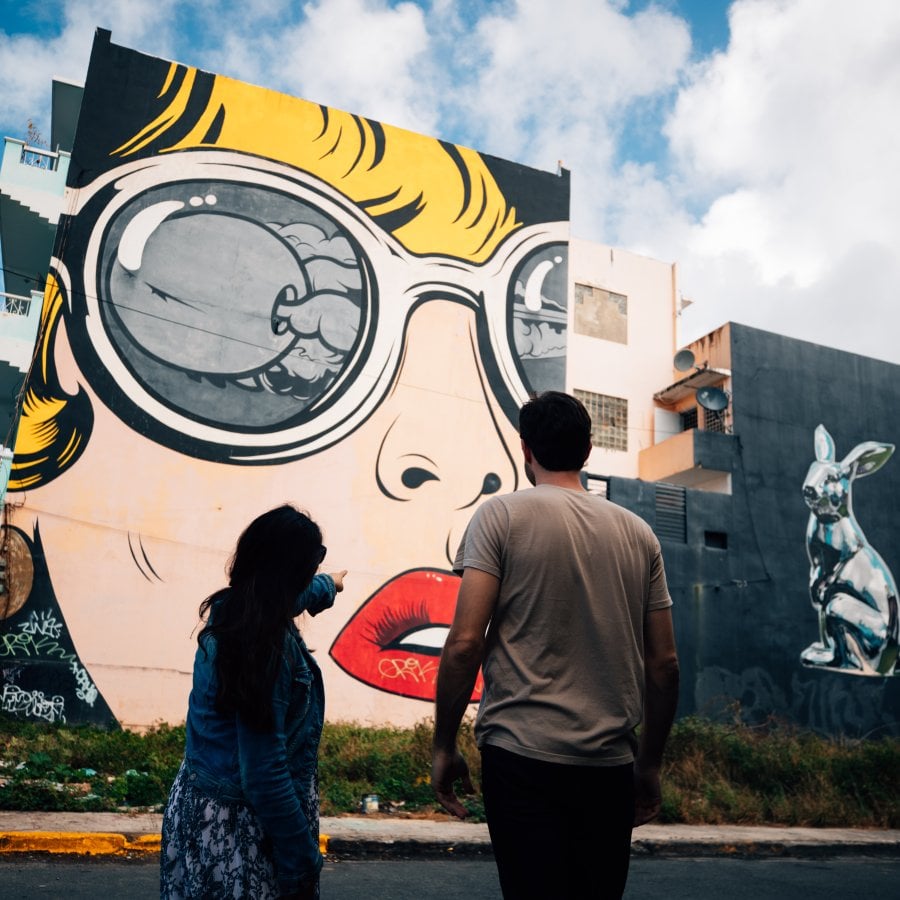
Walking up and down the streets of Santurce, you’ll notice that the buildings are covered in urban art that feature some of the best street artists and muralist in the world.
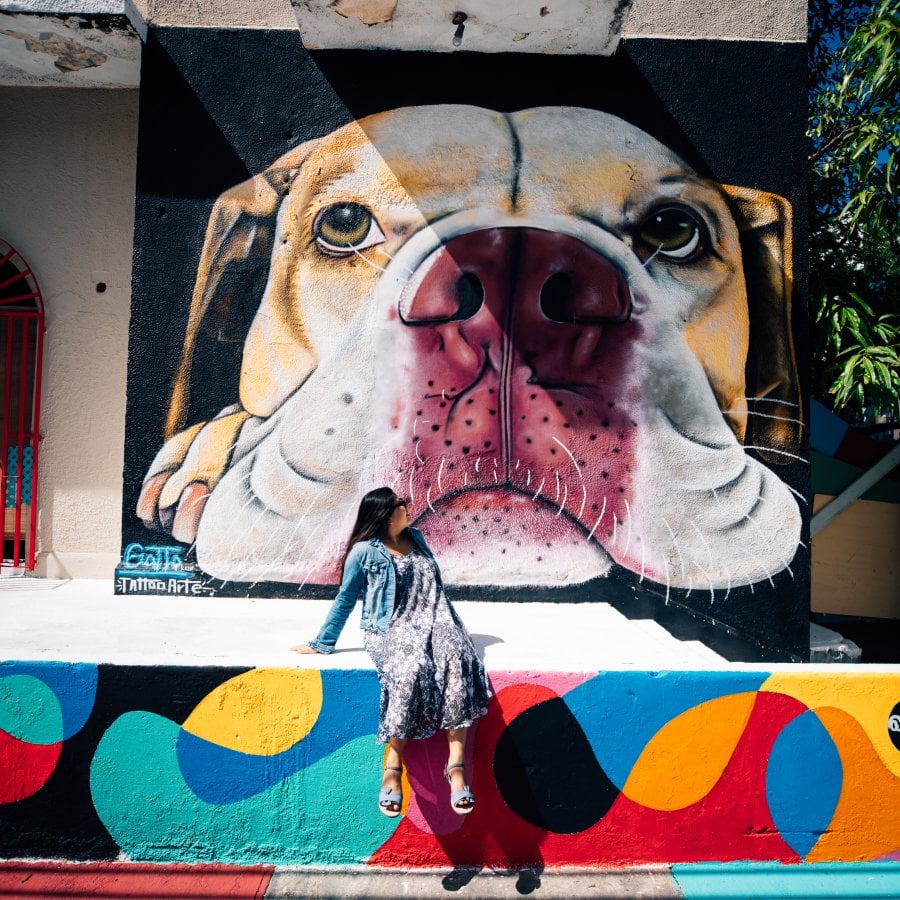
Santurce es Ley gathers local and international muralists.

Colors will be popping and calling your attention everywhere you turn.
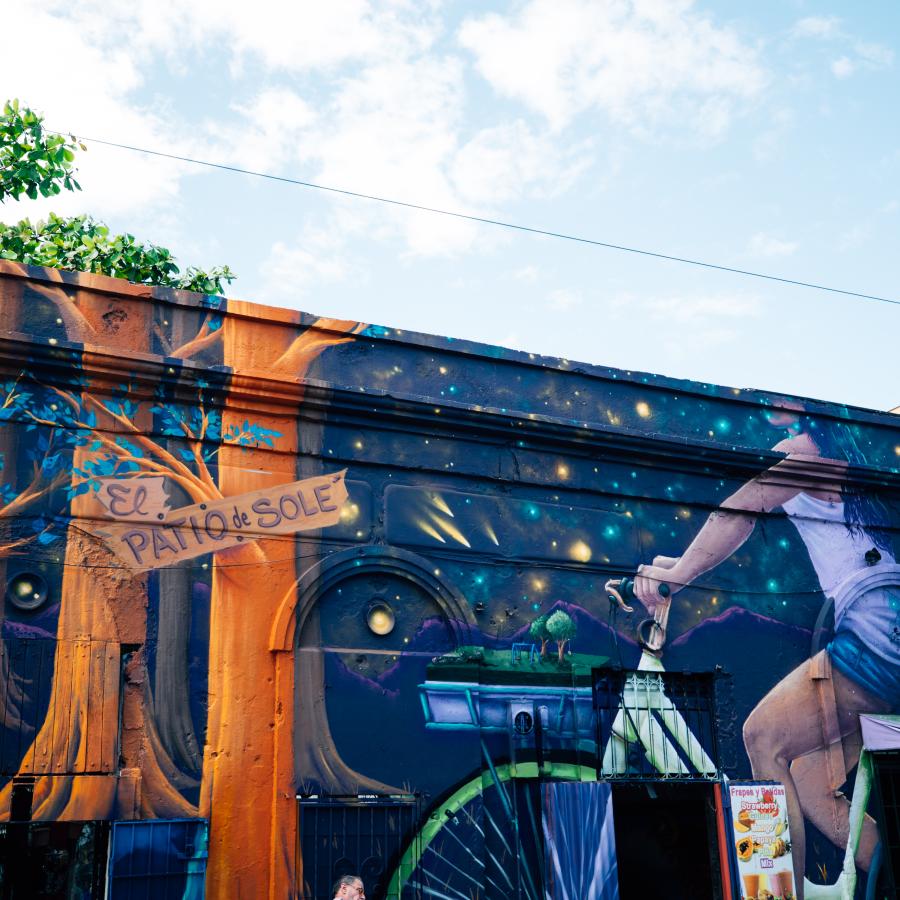
The whimsical artwork portrays not only the story of the Island, but it displays an insight into Puerto Rican culture.
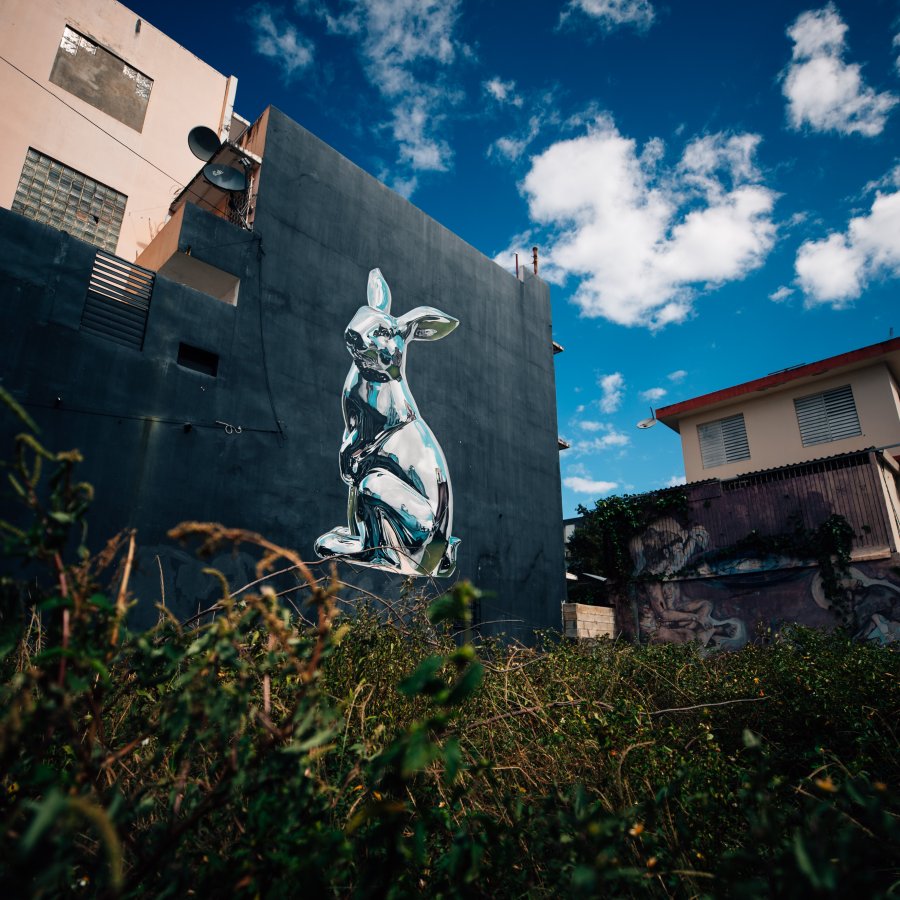
Enjoy the vibrancy and snap a pic while you’re at it… if you’re about that Instagram life.
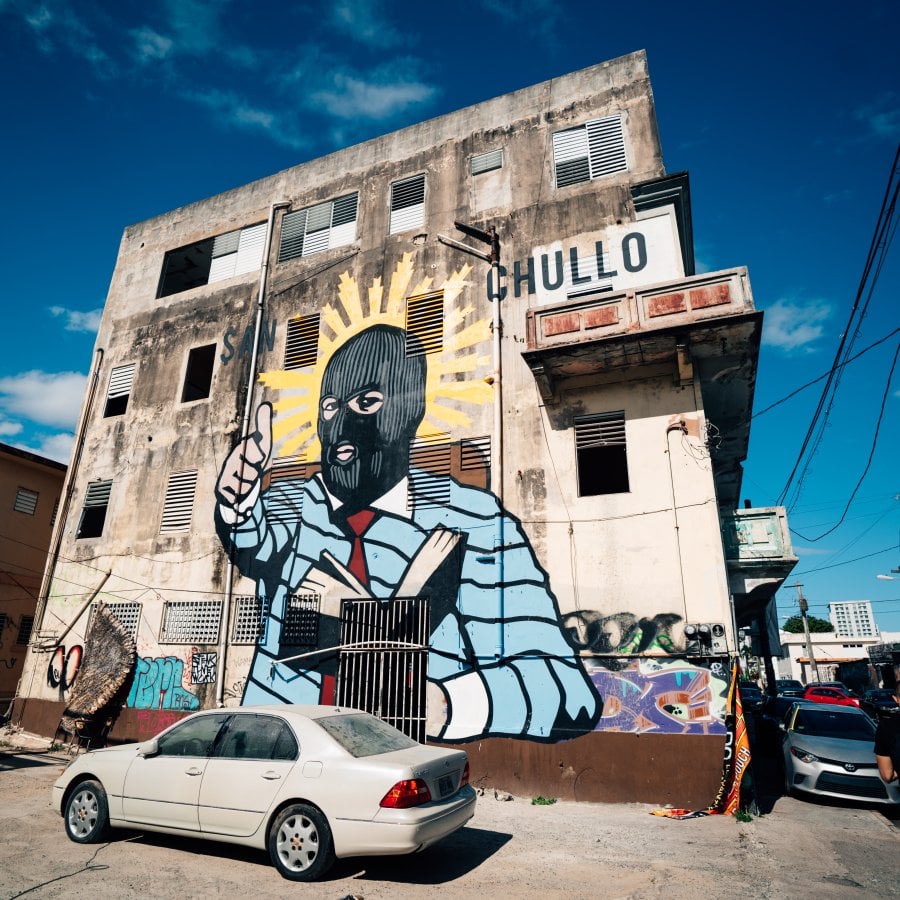
From old buildings to new structures, art is found everywhere.
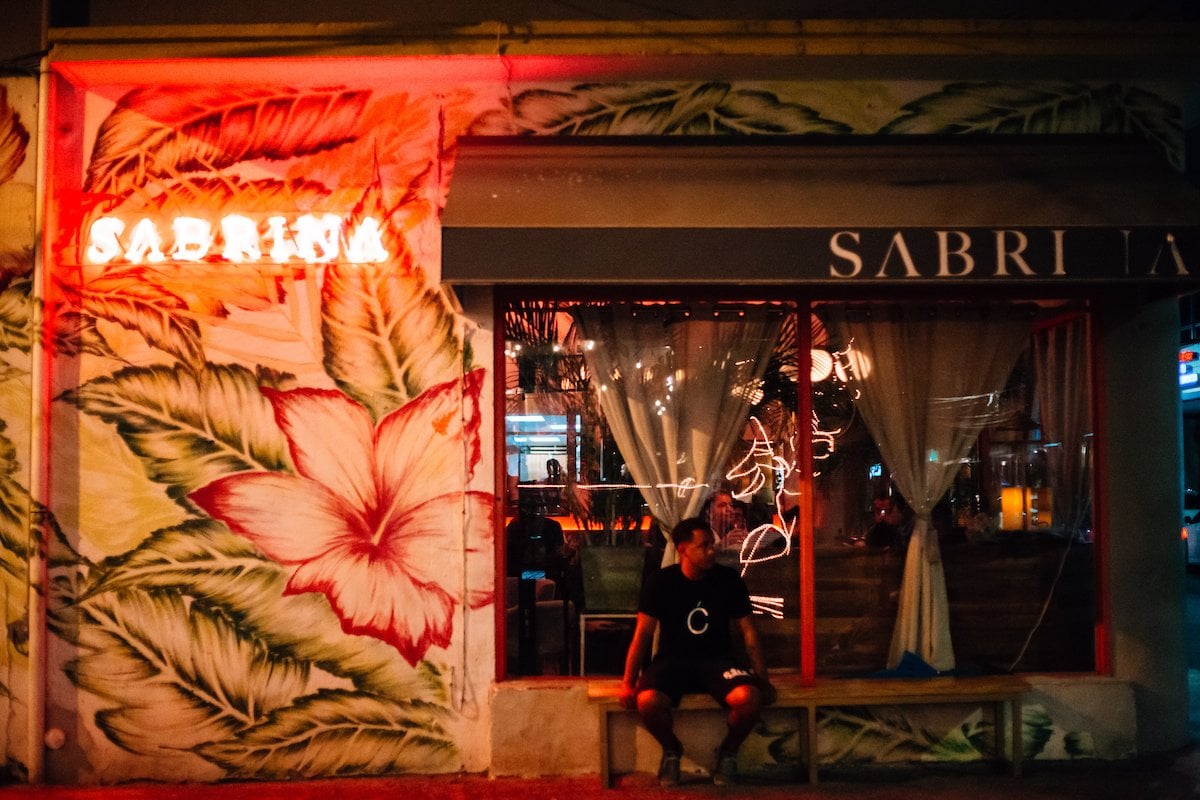
On the Cutting Edge: Calle Loíza
Lined with trendy cafés and restaurants is Calle Loíza, known as Santurce's "foodie and arts" avenue. As you explore the area, you'll notice that all the storefronts and buildings are covered in art – from murals to graffiti and mosaics.
Most of Calle Loíza is a mashup of brightly colored street art, but one of the most Instagram-famous is "Loíza Brinca," located on a corner building that features the entire Puerto Rican flag. Another popular mural sits just outside Sabrina, a trendy place for brunch, and you’ll find others across from Café Tresbé. Dubbed "Tropical Paradise," it is a flowery masterpiece by local artist Natalia Rodríguez. These are only a few examples of the different pieces that might catch your eye in this part of town.
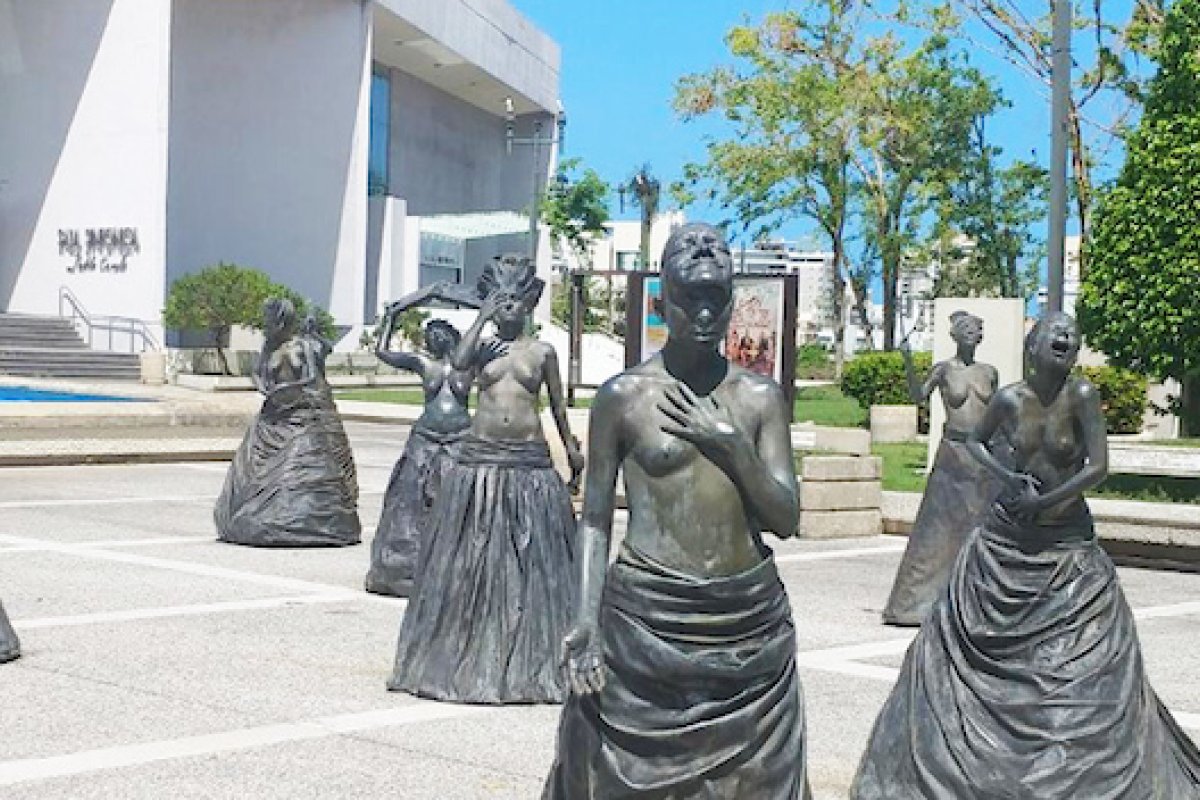
Sculptures bigger than life!
Street art in Santurce is not limited to the walls of a building, and you’ll find other mediums represented as well. One of the most notable installations is the "Aguacates" at La Placita de Santurce. Puerto Rico's "favorite fruit" was part of the city's Urban Art Project, which aimed to restore the now-popular market square. The avocados complement the traditional architecture of la plaza del mercado and make for a great spot to take pictures before (or after) grabbing a drink and dancing at one of the many bars around it.
Created by the Annex Burgos (who was also responsible for the avocados sculpture), you can walk around demi-gods known as "Las Musas" in front of the Centro de Bellas Artes Luis A. Ferré. These nine bronze sculptures derive from actual models and represent the nine disciplines of art in Greek mythology: song, dance, literature, architecture, design, plastic arts, film, music, and theater. Beyond the dramatic sculptures out front, the Centro de Bellas Artes hosts a variety of cultural performances throughout the year, so check their schedule during your visit to see the equally impressive interior of the performance hall.
Comment Guidelines
We value your thoughts and want to foster a respectful and engaged community. As such, we ask that you adhere to the following guidelines when posting comments
- Please ensure your opinions are expressed respectfully.
- We won’t remove comments that engage in courteous debate but hate speech or any form of profanity will not be tolerated. This also applies to the inappropriate use of emojis or hashtags.
- Do not downvote or dislike a comment simply because you disagree with another person’s views.
- Self-promotion and external links are not allowed and will be removed.
- Avoid sharing private information about yourself or others. Doxing (the act of leaking personal information with harmful intent) is strictly prohibited and will result in a ban.
- Comments that are off-topic will be deleted.

